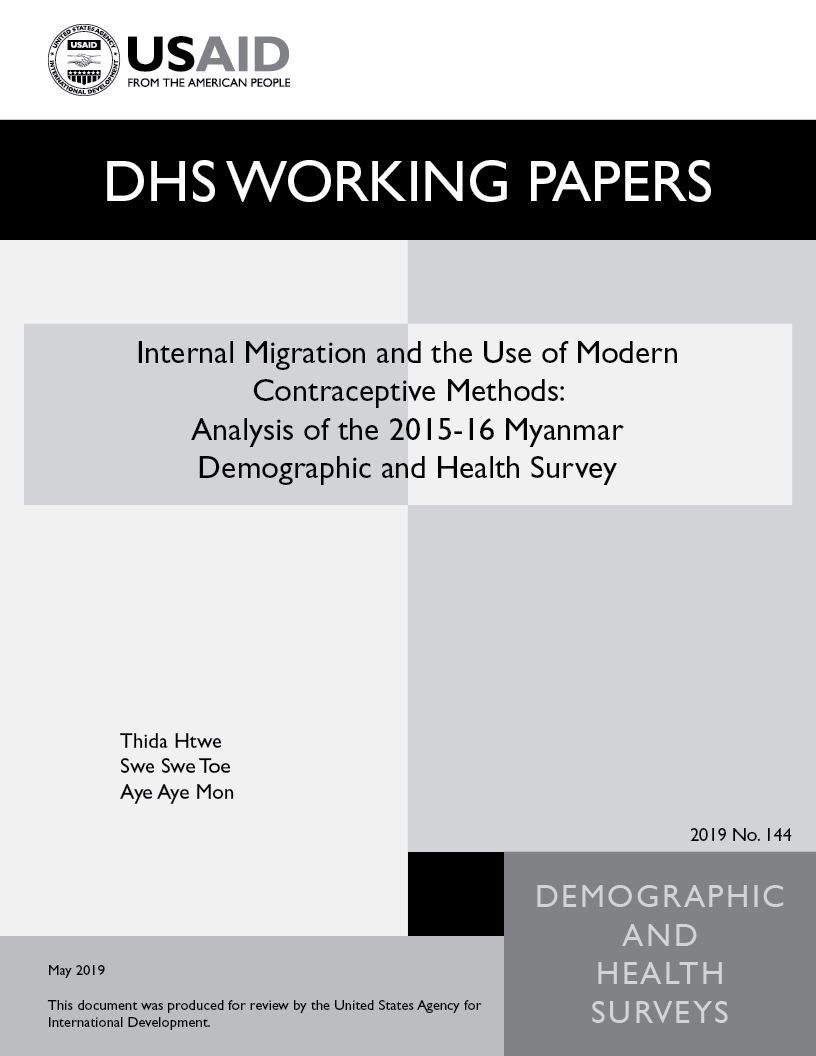
Abstract:
This paper addresses internal migration and
contraceptive use in Myanmar. Migration is a
multidimensional phenomenon of economic and
social importance and has significant impacts
on sustainable development. Myanmar remains a
predominantly rural country with among the
lowest levels of awareness and use of modern
contraceptives. Rapid urbanization, however,
is creating often remarkably large gaps
between modern contraceptive use in rural and
urban areas.
The study analyzed data from the 2015-16
Myanmar Demographic and Health Survey (MDHS),
the first DHS survey conducted in the
country. In our analysis, current use of
modern contraception is the dependent
variable, and the main independent variable
is the migration stream, which was
categorized as urban nonmigrant, urban-to-
urban migrant, urban-to-rural migrant, rural-
to-urban migrant, rural-to-rural migrant, and
rural nonmigrant. The association between
modern contraceptive use and migration is
analyzed using cross tabulations with
descriptive and logistic regression analysis.
The results show that urban-to-urban
migration is associated with increasing use
of modern contraception. This finding
suggests that modern contraceptive behavior
is influenced by changes in residence and the
characteristics of the place of origin and
destination. Other factors that show a strong
correlation with the level of modern
contraceptive use are women’s age, education,
empowerment, desire for another child, number
of children, and household wealth quintile.
The issue of internal migration is important
to planners, researchers, and policymakers to
achieve better fertility behavior and to
improve public policy for family planning and
health services programs.
 Internal Migration and the Use of Modern Contraceptive Methods: Analysis of the 2015-16 Myanmar Demographic and Health Survey (PDF, 549K)
Internal Migration and the Use of Modern Contraceptive Methods: Analysis of the 2015-16 Myanmar Demographic and Health Survey (PDF, 549K)
